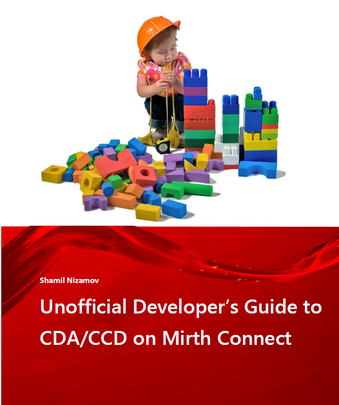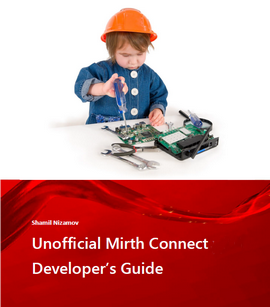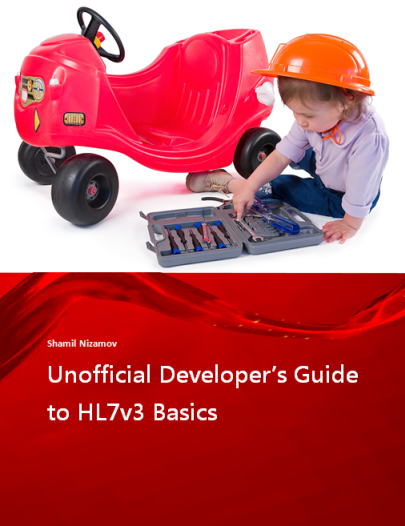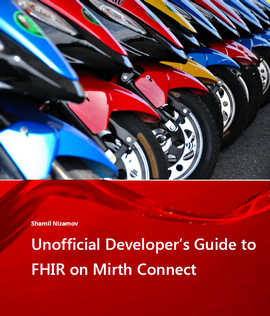




Published: July 26, 2018
Updated: July 26, 2018
Number of pages: 164
Format: PDF
Download size: 6Mb
Price: $35.99 USD
By clicking this button you agree with the Terms of Services.
Click "Return to iSARP" to complete the purchase.
Contact me first if you have not landed back to the download page and/or have not received an email with the download link.
As Mirth Corporation says on their web-site, "Mirth Connect is the Swiss Army knife of healthcare integration engines, specifically designed for HL7 message integration. It provides the necessary tools for developing, testing, deploying, and monitoring interfaces. And because it's open source, you get all of the advantages of a large community of users with commercial quality support."
This book introduces readers to the point that they are confident enough to start building their own healthcare data exchange interfaces and transforming HL7 messages to CDA/CCD documents.
As you read this book, you will be implementing a fictitious CCD Builder Server. Each connection point (channels and destinations) is explained in a separate chapter, which in turn provides step-by-step instructions on how to create and code data transformation rules for ADT and ORU messages.
The book introduces the reader the HL7 Reference Information Model (RIM) model to let you implement a proof of concept JavaScript library to parse CDA Header participants.
Lastly, the book gives brief overview of system design and systems integration requirements needed to implement the CDA based system. It also describes a CCD document verification process based on CDA XML schema validation, CDA MIF validation, CCD conformance validation and CCD Schematron verification process which differs from HL7v3 messages conformance. The CCD documents require some elements that are optional in HL7 CDA specification.
Content
| Chapter 1 | Mirth Connect Basics |
| Chapter 2 | What is a CCD? |
| Chapter 3 | System Integration Requirements |
| Chapter 4 | Transforming Data with Mirth Connect |
| Chapter 5 | Query Sender Channel |
| Chapter 6 | CCD Builder Channel – Header |
| Chapter 7 | CCD Builder Channel – Allergies |
| Chapter 8 | CCD Builder Channel – Medications |
| Chapter 9 | CCD Builder Channel – Problems |
| Chapter 10 | CCD Builder Channel – Results |
| Chapter 11 | CDA R-MIM Structure |
| Chapter 12 | Defining Entity classes |
| Chapter 13 | Defining Role classes |
| Chapter 14 | Brining it All Together |
| Chapter 15 | CCD Validation Tools |
| Chapter 16 | CCD Validation Automation |
| Appendix A | CCD Mirth Templates |
| Appendix B | Code Templates |
| Appendix C | XSLT files |
| Appendix D | Archive Content |
As HL7v2, CDA and HL7v3 RIM certified specialist, having more than 10 years of health care information systems and software design experience, I can help you with every phase of HL7 interface development projects, starting from requirements elicitation, development using interface engines, testing, and to going live.
If you have any questions, please feel free to contact me by email given below.
Related Books
 |
 |
 |
|